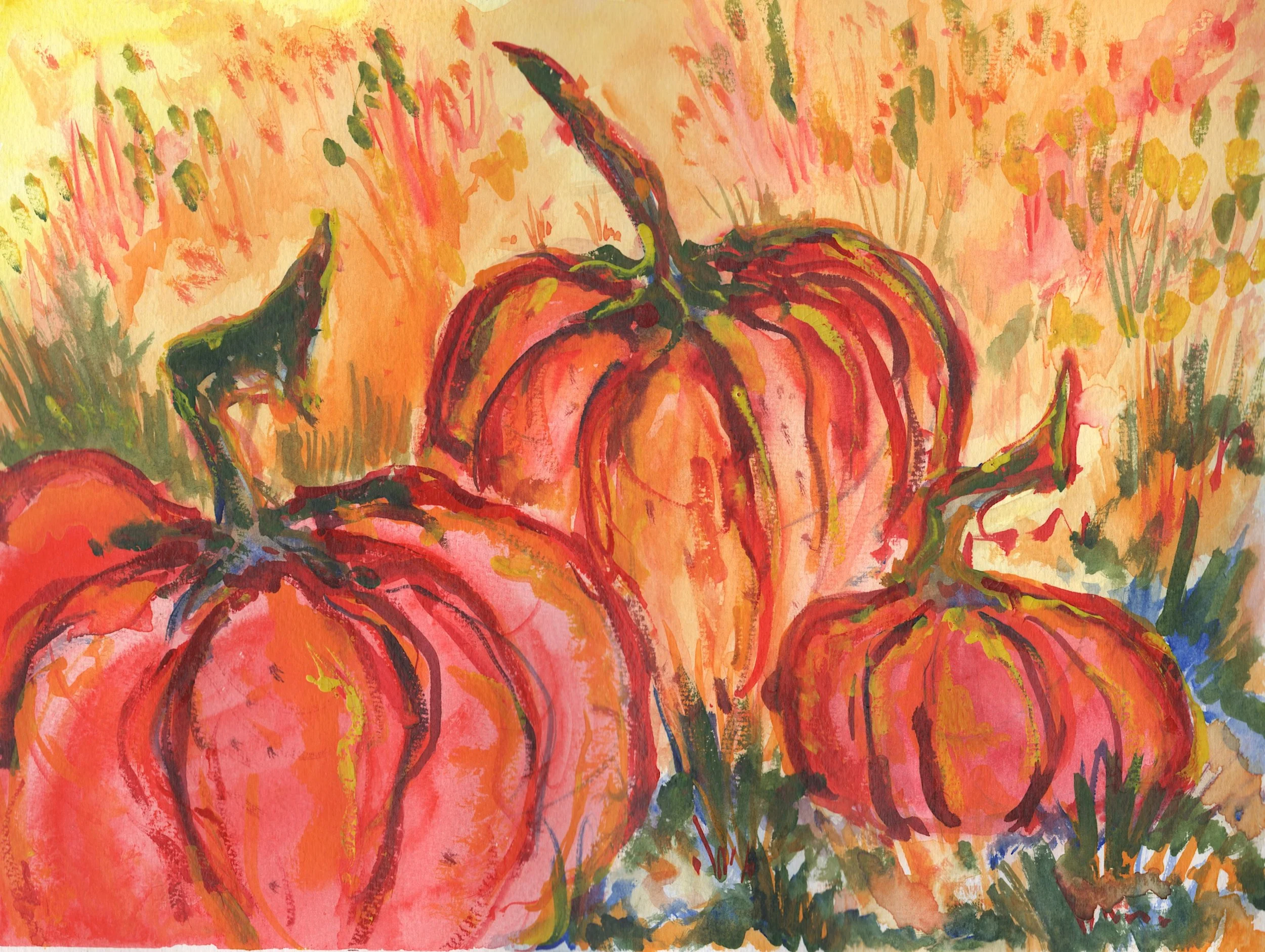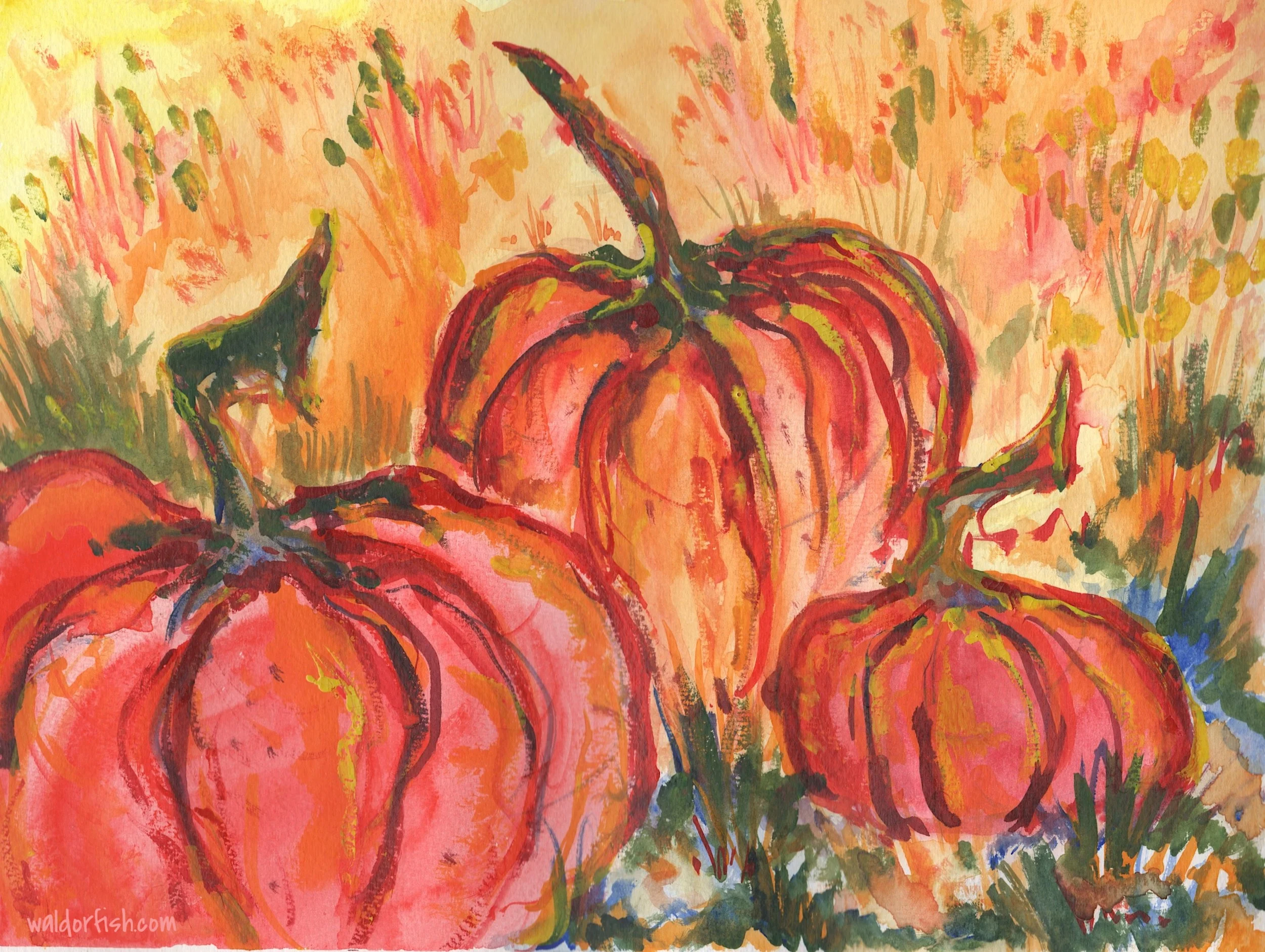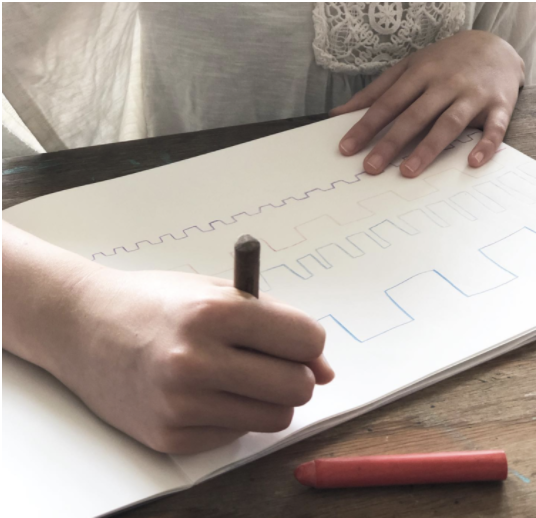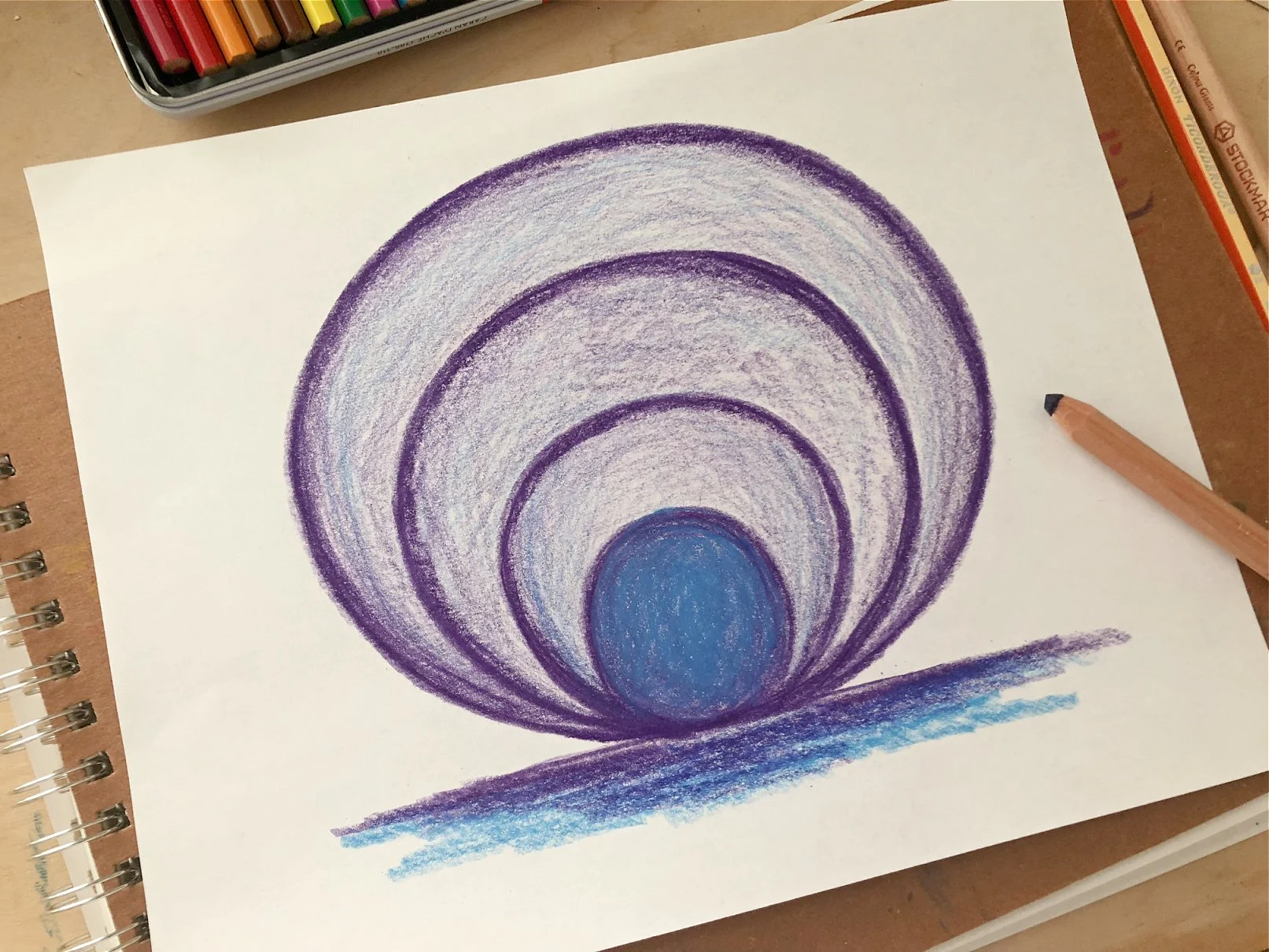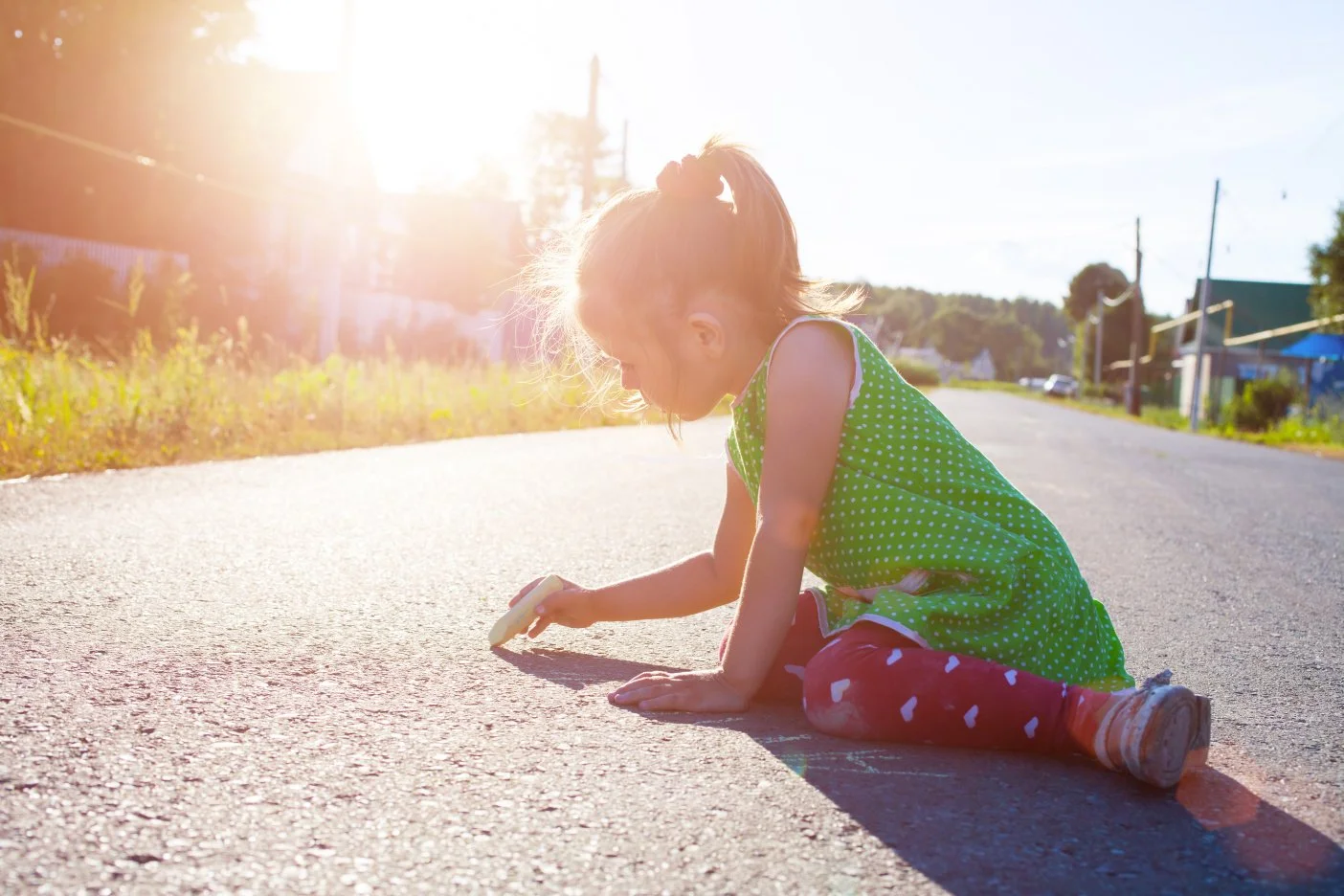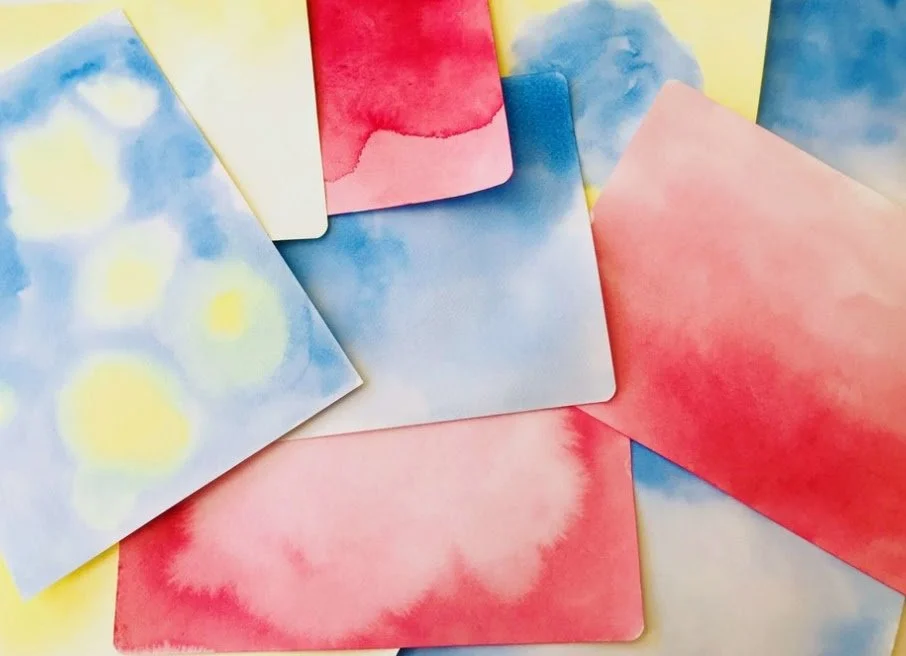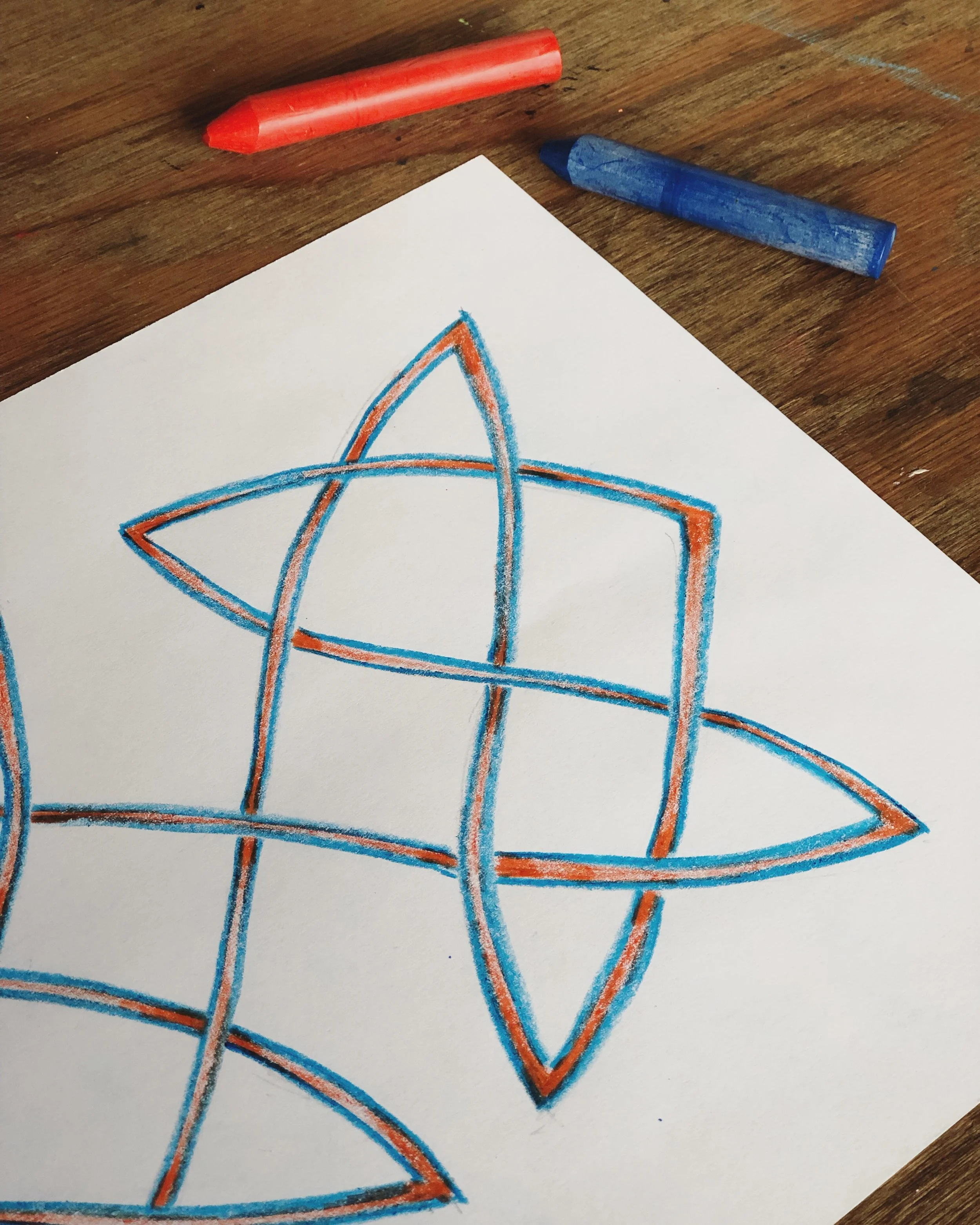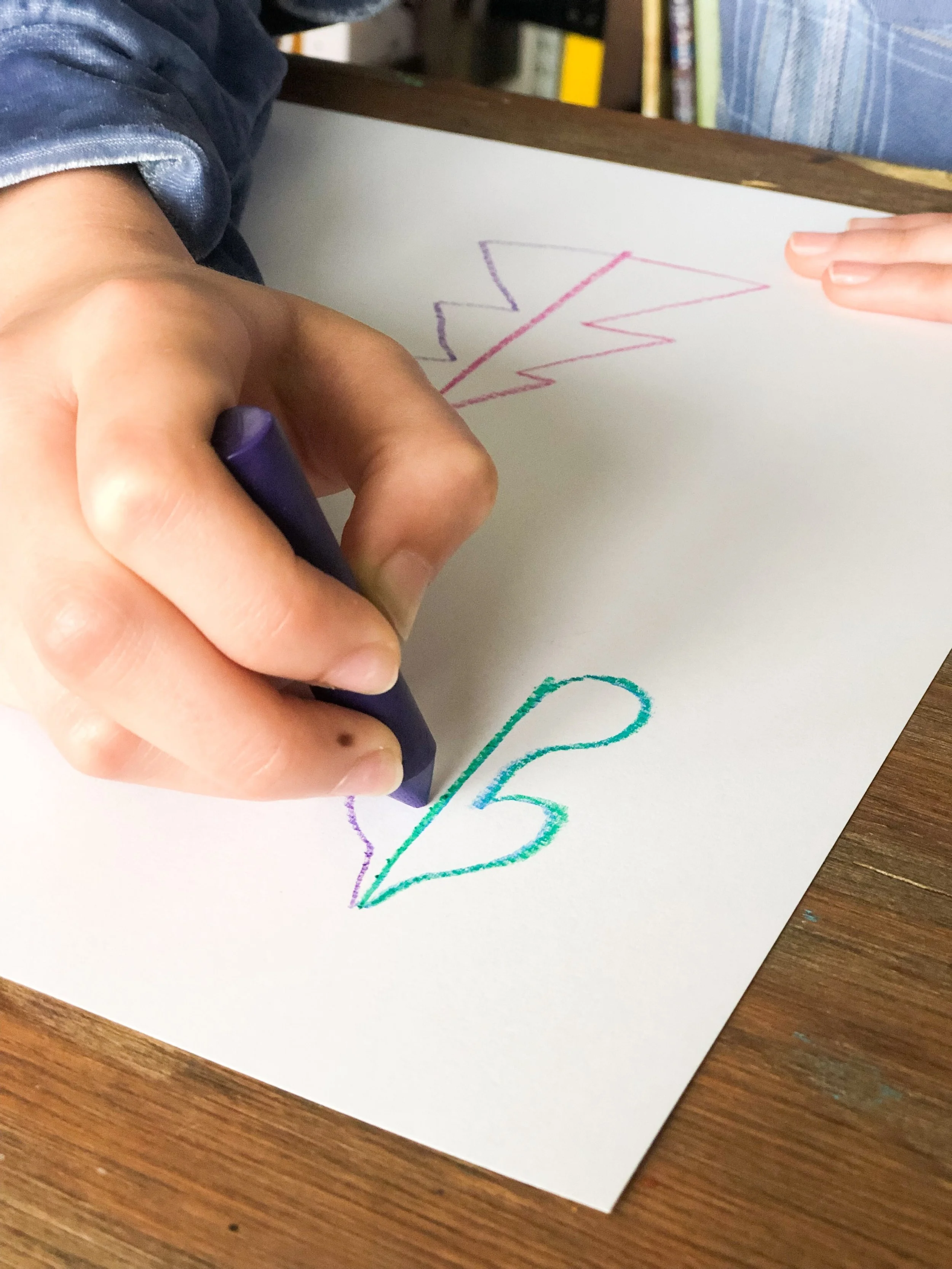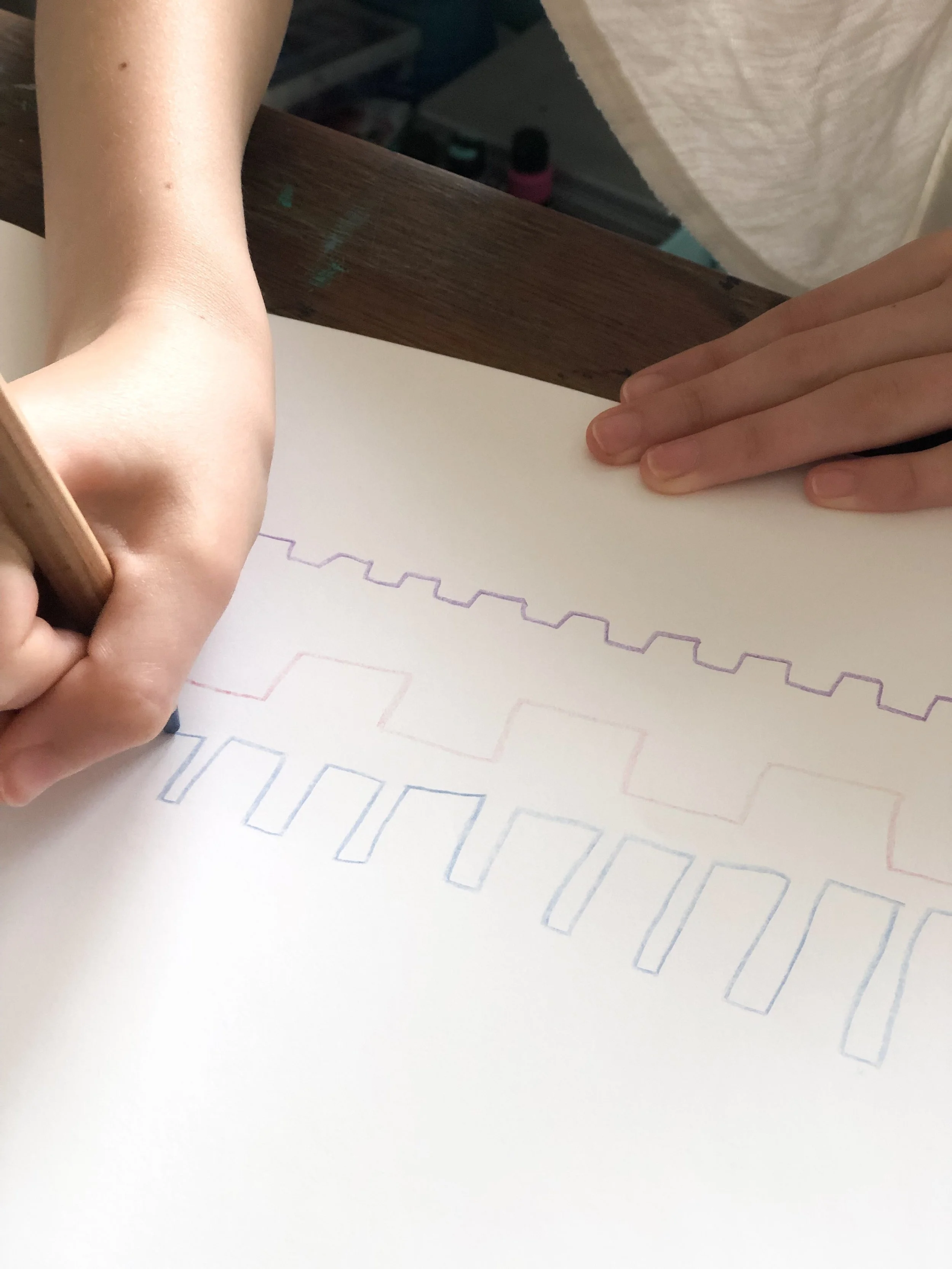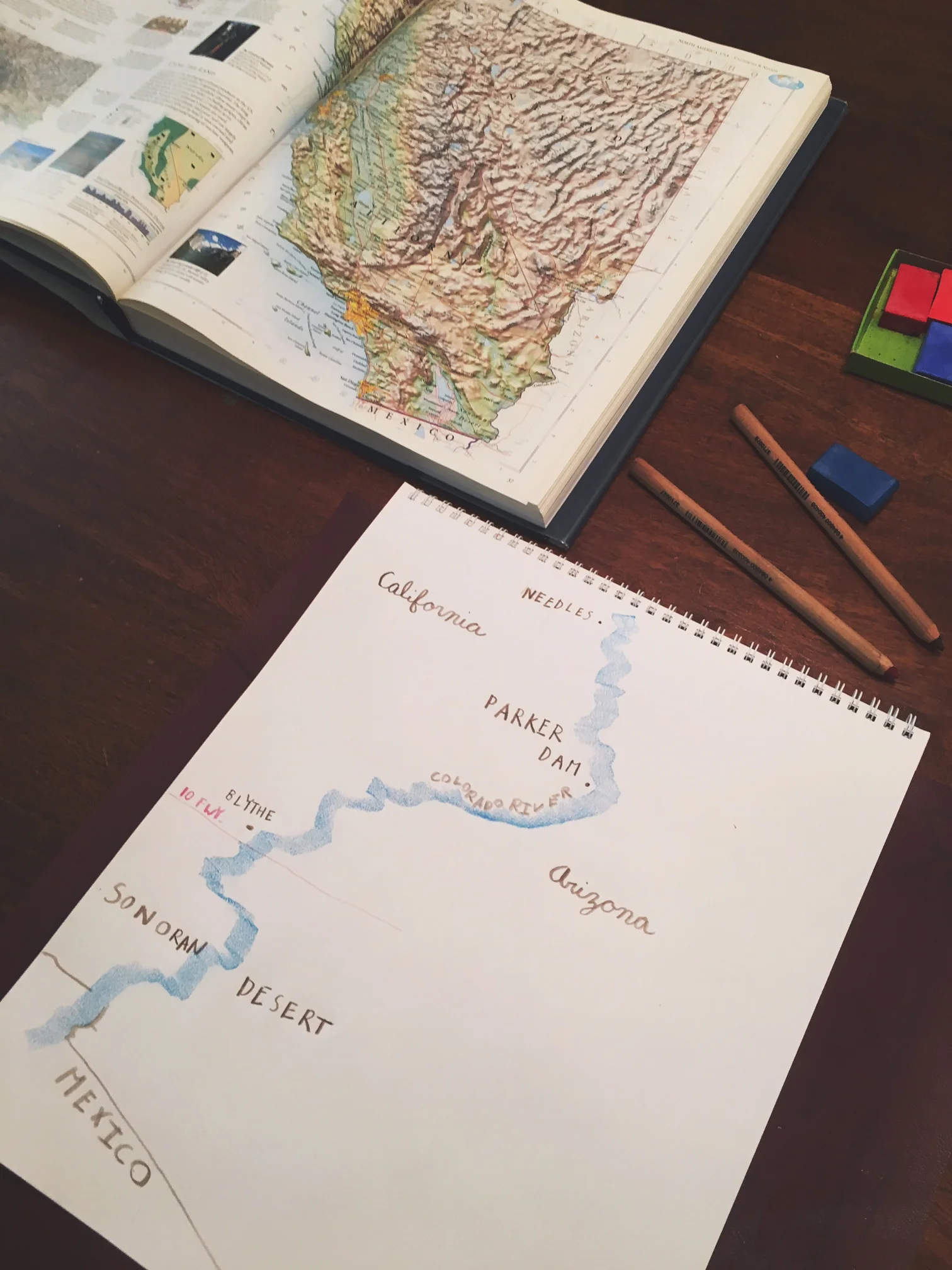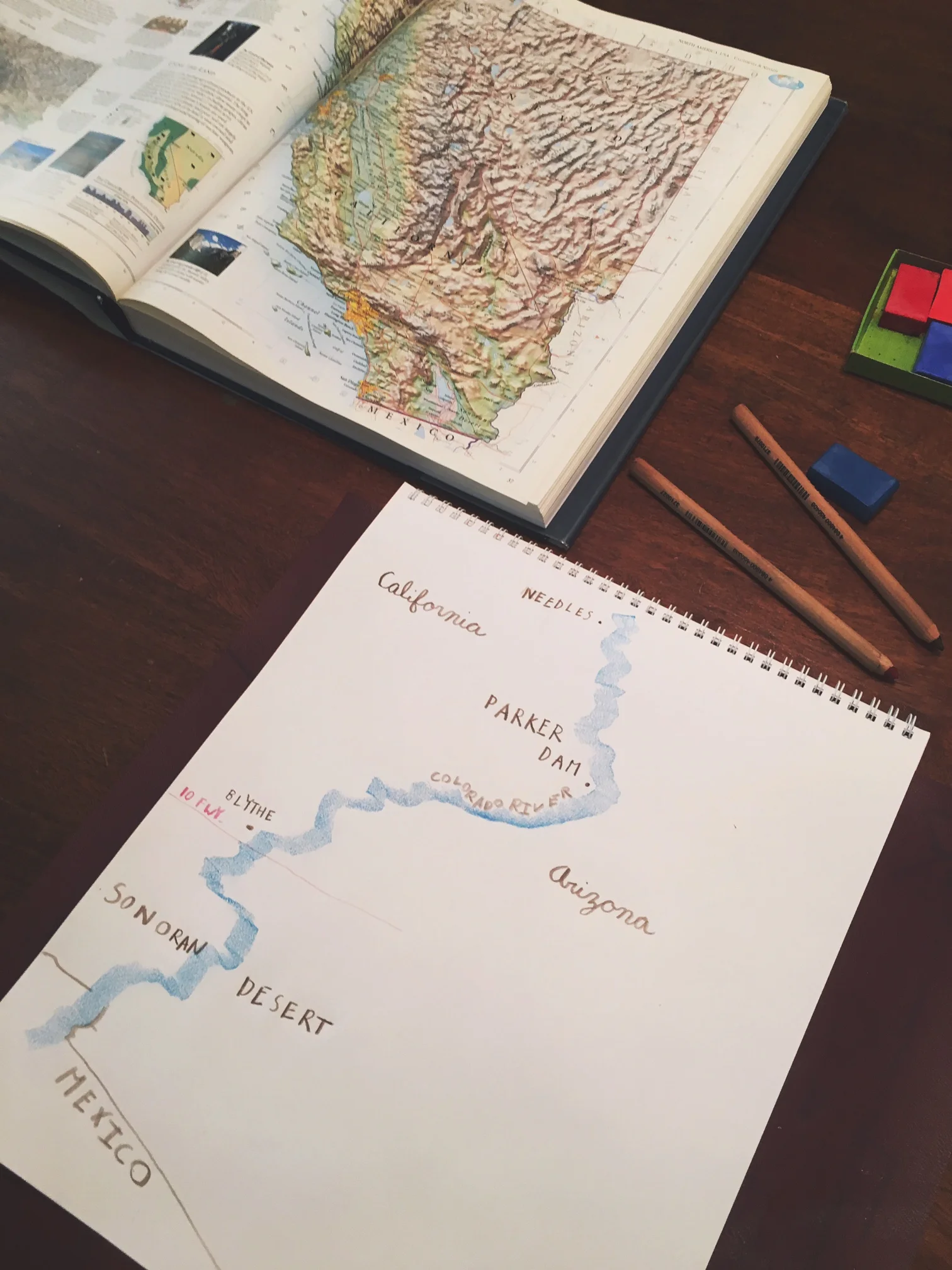
Waldorfish Blog
Waldorfish Families - Jessica Richardson
Every few weeks on the blog, we spotlight a Waldorfish community family. You are a diverse and global group - We’re pretty sure you’d be bff’s in real life. Today, please enjoy our conversation with Jessica Richardson!
(And don’t forget- we’re here for you! If you’re like some support in your homeschooling journey, click here!)
TELL US ABOUT YOURSELF!
I'm Jessica Richardson, a wild & free mama, on a Waldorf inspired homeschooling journey with 4 adventure craving kids- ranging from teens to toddlers.
HOW DOES YOUR FAMILY START THE DAY?
We start the day with breakfast all together. After breakfast we set our intentions for the day, discuss the plans for the day, the weather, the moon phase, and recite the weekly verse, poem, or thought.
GIVE US A SNAPSHOT OF ANY MANAGEMENT/ORGANIZATIONAL STRATEGIES THAT ARE HELPING YOU FLOW THROUGH YOUR HOMESCHOOLING DAYS.
I am homeschooling all 4 of my kids. The older two are 12 and 13.5 year old boys and we do the same lesson blocks for them. My almost 4 year old and nearly 2 year old girls are not doing any classical schooling. They join in on all the art and hands on activities we do, such as science experiments and baking. For the older boys, I use my lifetime membership to Earthschooling to plan out my grade blocks. I really like the plethora of info on there. I add to the math and science blocks with the books "Physics is Fun" and "Making Math Meaningful for Middle School", the guides from A Waldorf Journey, and the online courses from Waldorfish Geometry. The boys have been homeschooled for the last 4 full years.
WHAT ARE SOME OF YOUR FAVORITE RESOURCES? (HOMESCHOOL OR OTHERWISE)
I really enjoy the Youtube videos Pepper and Pine makes, as well as the blog called Parenting Passageway. These mamas have older sons and it really helps me to see how they are homeschooling, still using Waldorf, with the Middle School years and beyond.
WHAT ARE YOU CURRENTLY READING?
Myself, I am currently reading "Rising Strong" by Brene Brown and "Women Who Run With the Wolves: Myths and Stories of the Wild Woman Archetype" by Clarissa Pinkola Estés. Our family read aloud for September was 'Kenny and the Dragon" by Tony DiTerlizzi. My sons are reading excerpts from "The Broken Spears" by Miguel Leon-Portilla currently, because we are in the Age of Exploration block for 7th grade and this book is an Aztec account of the conquest of Mexico.
What do you do when you are overwhelmed or stressed?
When the kids get overwhelmed, we head for the hills... literally. Heading outside and up our local canyons, immediately helps clear our minds and hearts. If its just me who is stressed out, I make time for a 90 minute Bikram hot yoga class, I feel mentally and physically lighter afterwards.
PLEASE SHARE SOME WORDS OF WISDOM YOU'VE GLEANED OVER THE YEARS.
I've learned to let go of perfect, to not expect myself to be able to teach every subject, and to not go it alone. Allowing others, like using the Waldorfish Geometry, gives me a break from planning so I can place attention somewhere else. My best advice is to create a local Waldorf inspired group to meet with weekly for nature walks, festivals, and seasonal fun. Ours is finally thriving and my children and I are so happy when we meet!
TELL US A BIT ABOUT HOW WALDORFISH COURSES ARE ADDING TO YOUR SCHOOL YEAR. READY....GO!
We have used Waldorfish Weekly Art for 2 years now and just starting in the Festival Art course. Everyone in my family loves the Waldorfish art classes, even the toddler! My 4 year old loves the chalk and watercolor lessons, she asks to do extra art all the time. My oldest son loves art already, but Brian has helped him create fuller pictures, by paying attention to things like mountains in the background, or how to place objects in the foreground verses in the background. We all look forward to Fridays with Waldorfish!
WHERE CAN WE CONNECT WITH YOU?
Instagram: @thehippyrichys
Celebrating Michaelmas
The seasons are shifting.
For some of us the relief of fall is on the horizon. For others, the arrival of spring has been long awaited.
Last week I noticed that I was craving soup. Like, CRAVING. Never mind that it's still in the mid 90's where we live. For Brian, this seasonal shifting means a trip to our local foothills and his beloved Apple Hill (insert images of apple cider, apple donuts, etc, etc, here). Of course, we're a few weeks ahead of ourselves still, but....it's coming. Can you smell it?
Michaelmas is approaching as well. This brings to mind the year that Brian almost (almost) had our kids believing that he saw a Michaelmas dragon sale going up in the parking lot of a local chain store near us. Think Christmas tree lot, but with dragons of assorted temperaments, colors and sizes. Thankfully our kids (mostly) appreciate our sense of humor. So far anyway.
The change in season brings new opportunities to come together and celebrate!
Here are two pieces that we love for this time of year.
"Modern parenting seems to dictate that we should protect our children from the bogey and even from knowledge of its existence. But “it is in the world already.” Children know the terrors that lurk under the bed, in the dark, and in the whispers of grownups.
With fairy tales and golden capes and wooden swords and songs, we stop lying to them. When we show them the monsters and evil hiding in the stories, and help them shape their weapons, when we give them the words to “conquer fear and wrath,” we validate what they already know – that there are dragons."
On Dragons and Making Swords... read the full piece here
No matter which hemisphere you call home, this piece also offers many ideas for consideration.
"As a Waldorf-inspired homeschooler, you have no doubt noticed that a healthy festival life is one of the anchors around which Waldorf Education is organized. These rituals and festivals have traditionally contributed to the stability of communities of the past, and now brick-and-mortar schools of current time. They create an opportunity to relate to the seasons, and to each other.
What then, does this mean for those of us who have chosen to leave a local Waldorf school, or, to never attend one at all? What meaning do these festivals, or feast days as they are traditionally called, have when they are practiced in much smaller group settings without institutional support, or even at home within individual families?"
In Praise of Balance: A Healthy Festival Life ... read the full piece here
Additionally, take a look at our Michaelmas Pinterest board for plenty of ideas, tutorials and resources.
All our best to you,
Robyn & Brian Wolfe
Related content:
What is Form Drawing?
Form drawing is a cornerstone of Waldorf curriculum in grades 1-4.
I will freely admit to anyone that knows what Waldorf form drawing is that I was terrified to bring it into a homeschool environment.
What, exactly, was encoded in those mysterious lines and shapes? What esoteric wisdom did I need to attain before I could try to impart this practice to my son? Like most things I fear, the answers were not as complicated as I originally thought.
“The child’s capacity to develop an integrated sense for spatial orientation – upwards, downwards; left, right; center, periphery – is supported in the practice of form drawing.”
Form drawing, it turns out, is a brilliant way to work with one’s senses...senses being of great importance in a Waldorf education. Paper and pencil serve as a lantern, illuminating our inner selves, the forms creating a blueprint of our inner (and outer) orientation.
" Rudolf Steiner, in his many lectures on this subject, speaks of twelve senses. Added to the usual five, there is a human sense for rhythm, warmth, balance, movement and so on..."
- The Incarnating Child, pg. 73
Form drawing is a beautiful way to bring color and form together.
Beginning in first grade and extending throughout her time at a Waldorf school, a student engages in drawing exercises that range from very simple to very complex, according to her grade and various topics of study. Straight and curved lines form the foundation for letters in 1stgrade, for Celtic knots in 4th and Geometry in middle school. Over and over, drawing both imparts knowledge and folds it back into oneself.
"Straight lines and curves are the starting points for form drawing. This begins with the discovery that the line is a path along which one can move. Children should experience the characteristic difference between straight lines and curves through drawing them, after having explored their character through whole bodily movement in space."
- The Tasks and Content of the Steiner-Waldorf Curriculum, p.137
Much can be ascertained about the form drawer from this kind of work, and the analytical angle is an important one. There is, however, another important aspect of Form Drawing that should not be overlooked: it’s a lot of fun. As soon as I embraced form drawing as the journey itself (instead of a perfect form being the destination), our weekly work became something to look forward to.
Don't forget to practice!
Forms can and should be returned to time and again for a variety of reasons that will become clear to you as you study, draw, reflect, and repeat. Remember that they are not about achieving anything in particular. Think of them as a friendly guide.
Form drawing is a deep ocean that one could spend an entire lifetime learning to navigate. Don’t let this stop you from jumping in. Buy a book, look up #formdrawing on social media and reach out to people whose ideas are of interest to you, but most importantly pick up a pencil, chalk, stick or block crayon, suspend your judgment, and encourage your child to do the same.
This radical act of trust in the power of art to teach and transform is the lynch pin of Waldorf Education.
Try a Free Form Drawing lesson!
About the Author
Cristina Havel lives in Southern California where she and her husband have worked together for nearly 2 decades. They homeschool their son using the Waldorf pedagogy as a guide and believe in the transformative powers of art and nature.
Related content:
Staying True to Steiner: Honoring the interplay between routine and variety.
At the crack of dawn on a recent Sunday morning, my husband and I -- and our 9-year-old son -- piled sleepily into our car in Los Angeles and started driving across the Sonoran desert to watch a baseball game in Arizona.
About 3 hours later, we crossed into our neighboring state and made note of the meandering border between us: the Colorado River, glistening gold and blue.
After experiencing some highs and lows (low: the Dodgers lost; high: the acquisition of a game ball) we drove 5 hours home. On the same day.
Why would we do that, you might ask? Well, there are two answers to that question.
One is, we had to work on Monday.
The second is, we are a homeschooling family.
We follow the Steiner tradition of education, and in his words: “the children are the curriculum” (Tasks and Content of the Steiner-Waldorf Curriculum, pp. 15).
I take that to mean that our children and their interests, abilities, and experience of the world cannot and should not be segregated. In order for our son to truly get a feel for distance and time, we felt that it was important for him to see the expansive desert for himself and experience it by day and by night. Our hope when he is a father, is that he too will be inclined to make sacrifices for his children, and do things that they will remember for the rest of their lives, even if they are tiring and inconvenient for him. Love is action, and education encompasses not only knowledge but character-building.
I was clear about the fact that school was not going to be happening on Monday morning after a 18-hour day on Sunday. However when we did return to our school work, I had a good idea of what I wanted him to explore.
"A variety of ways and means are needed to bring vital skills and useful knowledge to young people so that they feel inspired by and invested in learning: education is a process through which culture becomes personalized, and in becoming personalized, culture is also changed and re-charged." (Tasks and Content, pp. 14)
The first involved his love of the Japanese language and his favorite baseball player, Dodgers pitcher Kenta Maeda. I printed out a screenshot I’d taken from Maeda’s Instagram story on game day and my son got to work translating his message. Maeda, born in Osaka, writes almost exclusively in his native language. The abbreviated nature of Instagram Stories made it a suitably brief passage for translation.
"...heart, head, and hands [form] the primary educational paradigm at a Waldorf school. Rather than focus the educational work solely around the objective of acquiring knowledge, creating a meaningful learning process itself becomes the focus." -- Jack Petrash, Understanding Waldorf Education: Teaching From The Inside Out, pg. 24
The second thing I asked of him, after we studied the southwestern United States in our atlas, was to record a blind contour drawing of the Colorado River in his Geography main lesson book, then write in landmarks on either side of the border. It was interesting to watch him decide what to include, and moving to see him join the great human endeavor of understanding ourselves and our places by putting pencil (and in this case, a beeswax block crayon) to paper.
Routine is essential, but so is variety. Check the boxes, but think outside the box. None of the activities described above were directives found in a pre-packaged Waldorf curriculum (not that I do not love and make use of several, I do!), but I believe that they are aligned with Steiner’s ideas about education.
Steiner emphasized a creative framework above all else. No matter what your sources, have fun and trust yourself!
(photo credits: Cristina Havel)
Cristina Havel lives in Southern California where she and her husband have worked together for nearly 2 decades. They homeschool their son using the Waldorf pedagogy as a guide and believe in the transformative powers of art and nature.
Looking for something?
Welcome to Waldorfish! We started this adventure in 2012 out of a desire to make Waldorf training more accessible to class teachers in remote locations and to homeschooling families everywhere! Read more, click here.
WE WON! Our Weekly Art courses were voted “best interactive art program.” Learn more about the award, here.
A few of our most popular blog posts:



